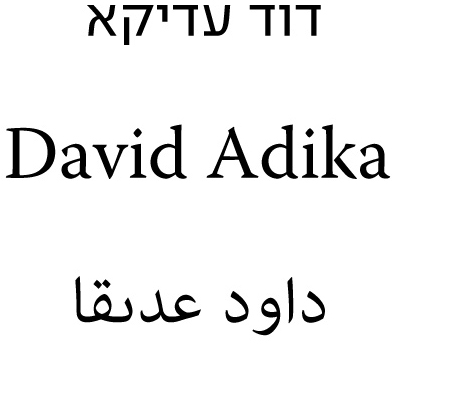
Africana Installation view, Tel Aviv Museum 2017
Mixed technique, color photography, inkjet print and paint on wall
(Print size: 130x170 cm / Work size: 230x320 cm)
Regarding Africa: Contemporary Art and Afro-Futurism
Curator: Ruth Direktor
The term Afro-futurism refers to music that grew during the 1960s among Afro-Americans as well as to the poetry, comics, cinema and art that developed later. Today it applies to a wide range of art that reflects, in various absurd ways, an African version of futurism. That is, the subversion of traditional divisions: fantasy and cosmology, usually ascribed to the mythology of a pre-modern past, transmute in an ancient-modern attire to representations of science fiction and futurology. Different narratives are reflected through utterances that shatter the conventional distinctions between truth and fiction, between myth and science, between technology and spiritualism. Often, the supernatural conception anchored in primeval myths appears in a futurist context, thus subverting hegemonic thought. In contrast, animism and science fiction coexist without conflict and in fact stem from the same sources.
The works in the exhibition reflect the vitality and effervescence that motivate Africa today, as well as the chaotic, brutal and at times tragic African reality, and its never-ending changes. Thus the exhibition not only denotes the futurist African direction, but also moves along the axis between an optimist and a pessimist perception of the continent, decades after its gradual liberation from colonialism. The works were created during the post-colonial period: the earliest date to the 1960s and 1970s (Africa’s “Decade of Independence”) and should be viewed as individual cases , as well as expressions of colonialism and its ramifications, through a redefinition of the African body, landscape and culture.
Works created in Israel reflect Little Africa—the growing community of immigrant workers and asylum seekers from Africa in south Tel Aviv. They express various aspects of the Africa–Israel connection, and of the way Africa has assimilated into the Israeli imagination, fantasy and reality.
Afro-futurism is proposed here as a prism of looking at sub-Saharan Africa, which is powerfully present, with all its complexity and tributaries, in the artistic work and discourse of the past few decades. Some regard Afro-futurism as a movement, others as a philosophy, but whether it is a worldview or an aesthetics, Afro-futurism is a means for stepping over the tortured past of Africa and the African diaspora, and adopt the future through a black cultural lens.

Africana 2016
Mixed technique, color photography, inkjet print and paint on wall
(Print size: 130x170 cm / Work size: 230x320 cm)
In 2003, David Adika presented “Mahogany,” a series of 11 photographs of wooden statuettes from Africa that decorated his parents’ living room. His father had brought them from his travels to Africa—small sculptures of animals made of pale wood and painted black, sold as souvenirs. Adika photographed them on a glossy black surface, with dramatic lighting, seeking to echo the domestic sideboard, and printed the photographs in a large format, thus providing the African souvenir statuettes with a magnificent, monumental representation. The title “Mahogany” further imbued them with the opulence of the expensive wood (which has nothing to do with them) and hinted at a pun: the Hebrew word for “mahogany” can be read as “what is my color?” The question which Adika raised about the statuettes as well as about himself made the first link in Israeli art between the African black and the relative blackness of Oriental Israelis, thus diverting along the way the post-colonial discourse to the local, ethnic context.
The series “Africana” continues Adika’s ongoing interest in objects as identity conductors and in still life as the continuation or replacement of the body as a political entity. At the core of these new photographs is commercial glazed ceramic tableware made in Israel in the 1950s, 1960s and 1970s by companies including Na’aman, Lapid, Palceramic and Beit Hayotser, in the attempt to create an authentic Israeli material language. The tableware, generally known as “Israeliana,” eventually lost its attraction due to, among other reasons, its identification with archeology, ideology and the fascination with the idea of a “homeland,” as well as changing tastes. Today it can be found in flea markets—usually slightly faulty or broken—where Adika purchases the pieces, building himself a collection of Israeliana in earthen hues, with the esthetics of Modernism identified with Israel’s early decades. When he photographs them against a background of wooden panels painted in complementary colors, he extricates from these vessels the layers of African influence that have not been elucidated so far, nor noted in the consciousness: the shapes, colors, design. He photographs the tableware singly, in pairs and in groups, and only a slight change of perception is needed in order to transform it into staged studio portraits.
Adika makes a double move here: he presents the formalist aspect of the 1984 MOMA exhibition “Primitivism in 20th Century Art: Affinity of the Tribal and the Modern” and annexes to it the insights of post-colonial discourse. The photographs show how the new, modern-western Israeli identity often adopted, not necessarily consciously, an African esthetic—exotic and authentic rootedness in the guise of Modernism.
Curator: Ruth Direktor, TLV Museum 2017
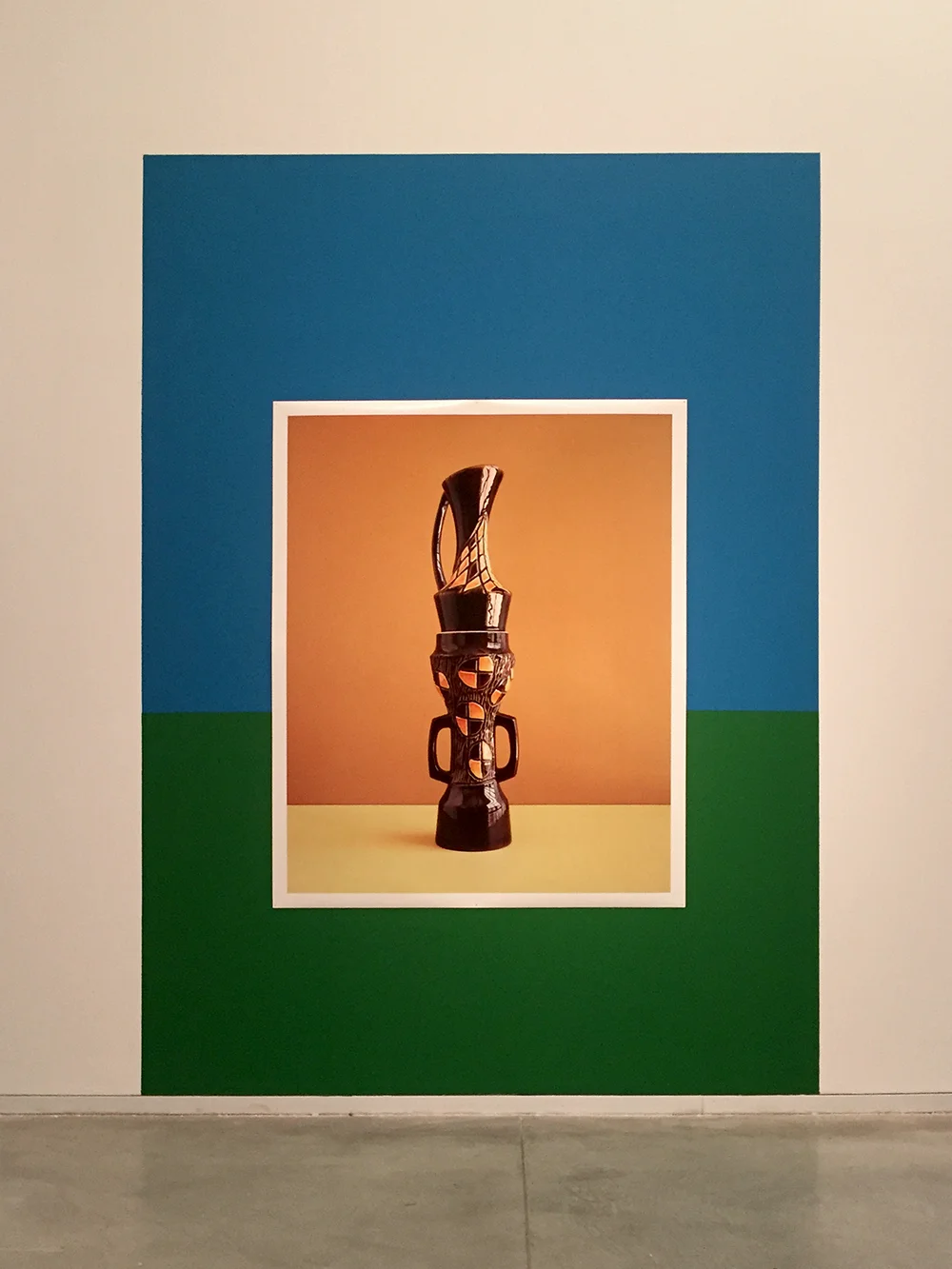
Africana Installation view, Tel Aviv Museum 2017
Mixed technique, color photography, inkjet print and paint on wall
(Print size: 130x170 cm / Work size: 230x320 cm)

Africana 2016
Mixed technique, color photography, inkjet print and paint on wall
(Print size: 130x170 cm / Work size: 230x320 cm)
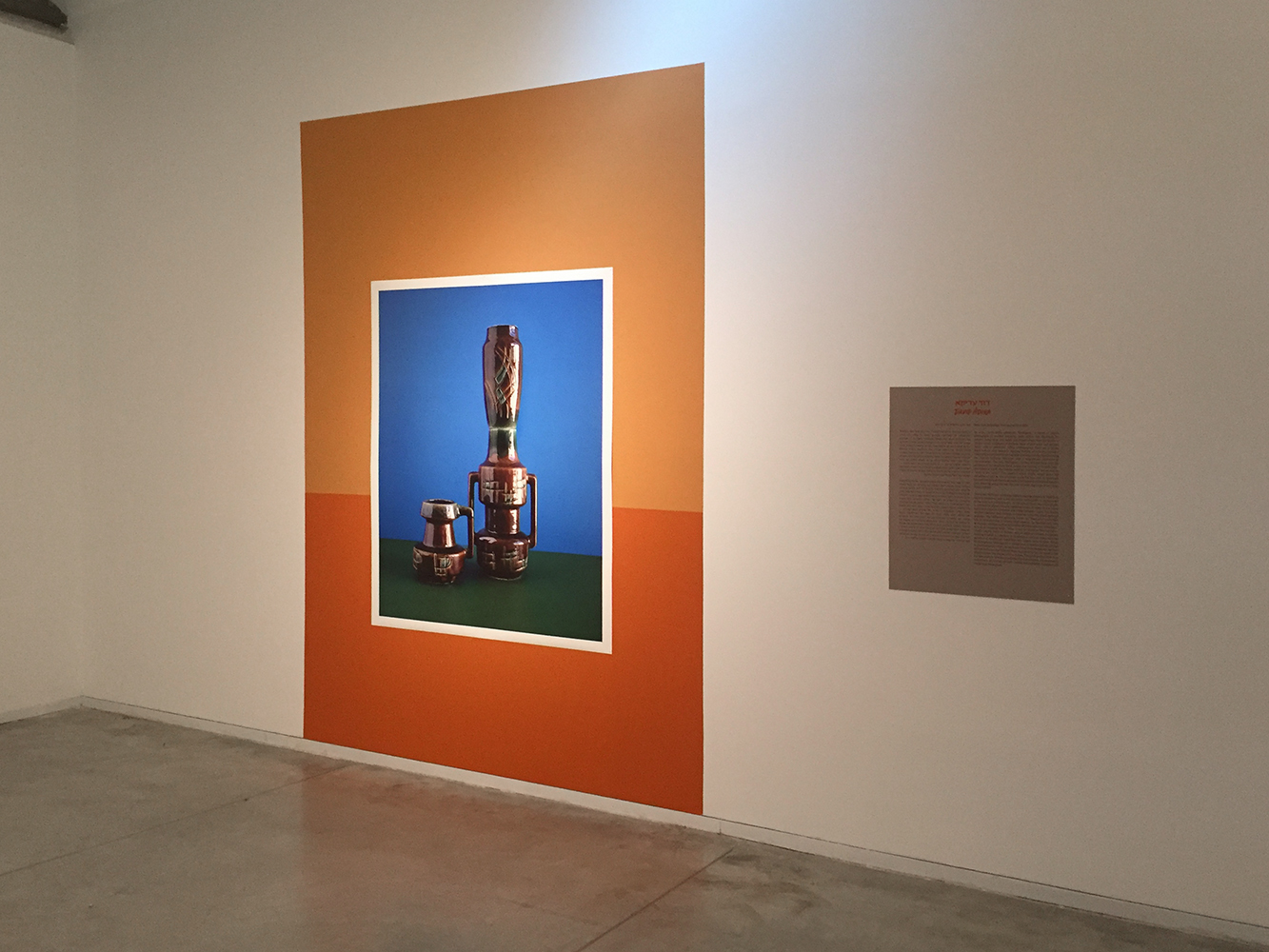
Africana Installation view, Tel Aviv Museum 2017
Mixed technique, color photography, inkjet print and paint on wall
(Print size: 130x170 cm / Work size: 230x320 cm)

Africana 2016
Mixed technique, color photography, inkjet print and paint on wall
(Print size: 130x170 cm / Work size: 230x320 cm)

Africana Installation view, Tel Aviv Museum 2017
Mixed technique, color photography, inkjet print and paint on wall
(Print size: 130x170 cm / Work size: 230x320 cm)
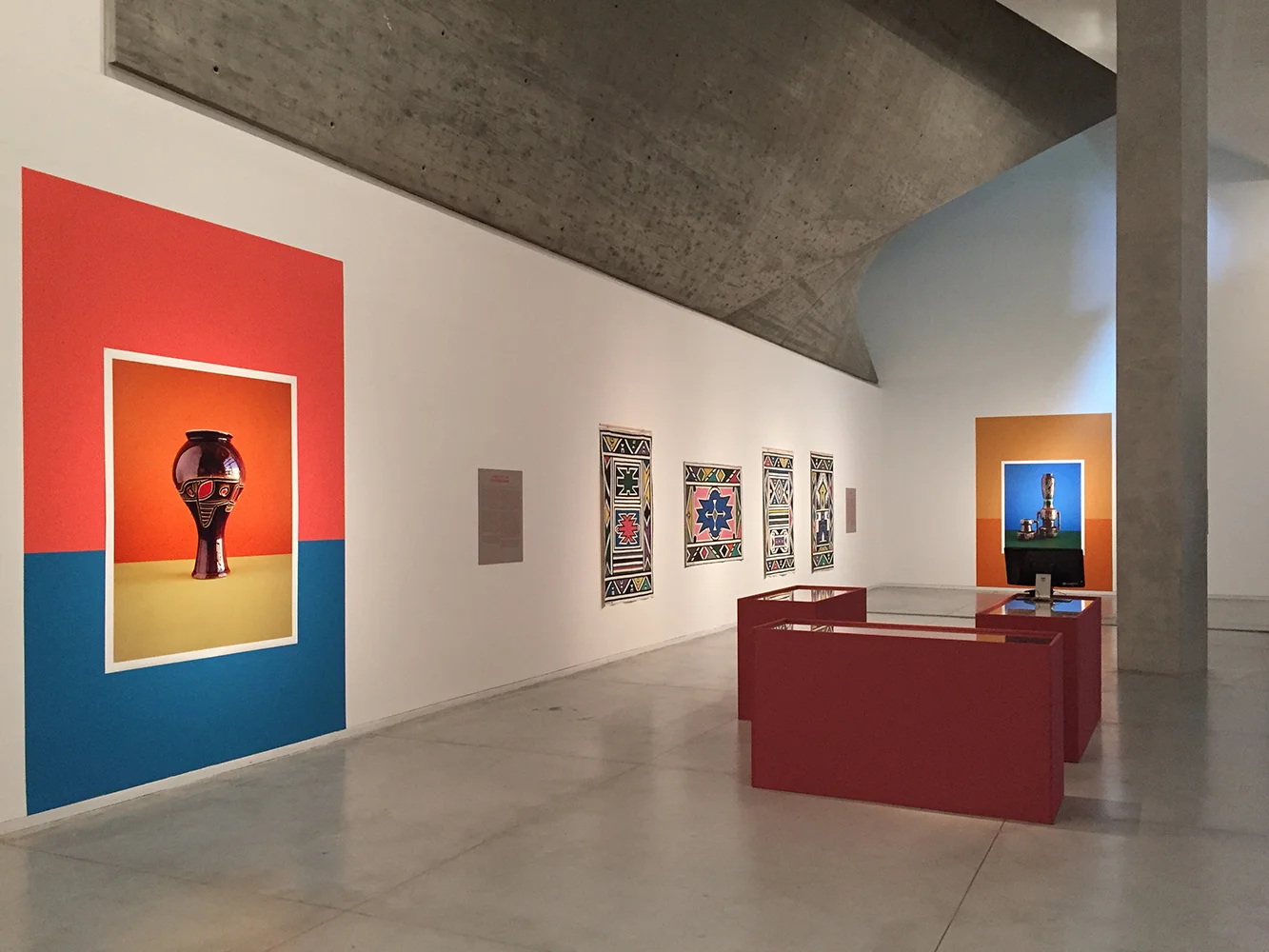
Africana Installation view, Tel Aviv Museum 2017
Mixed technique, color photography, inkjet print and paint on wall
(Print size: 130x170 cm / Work size: 230x320 cm)
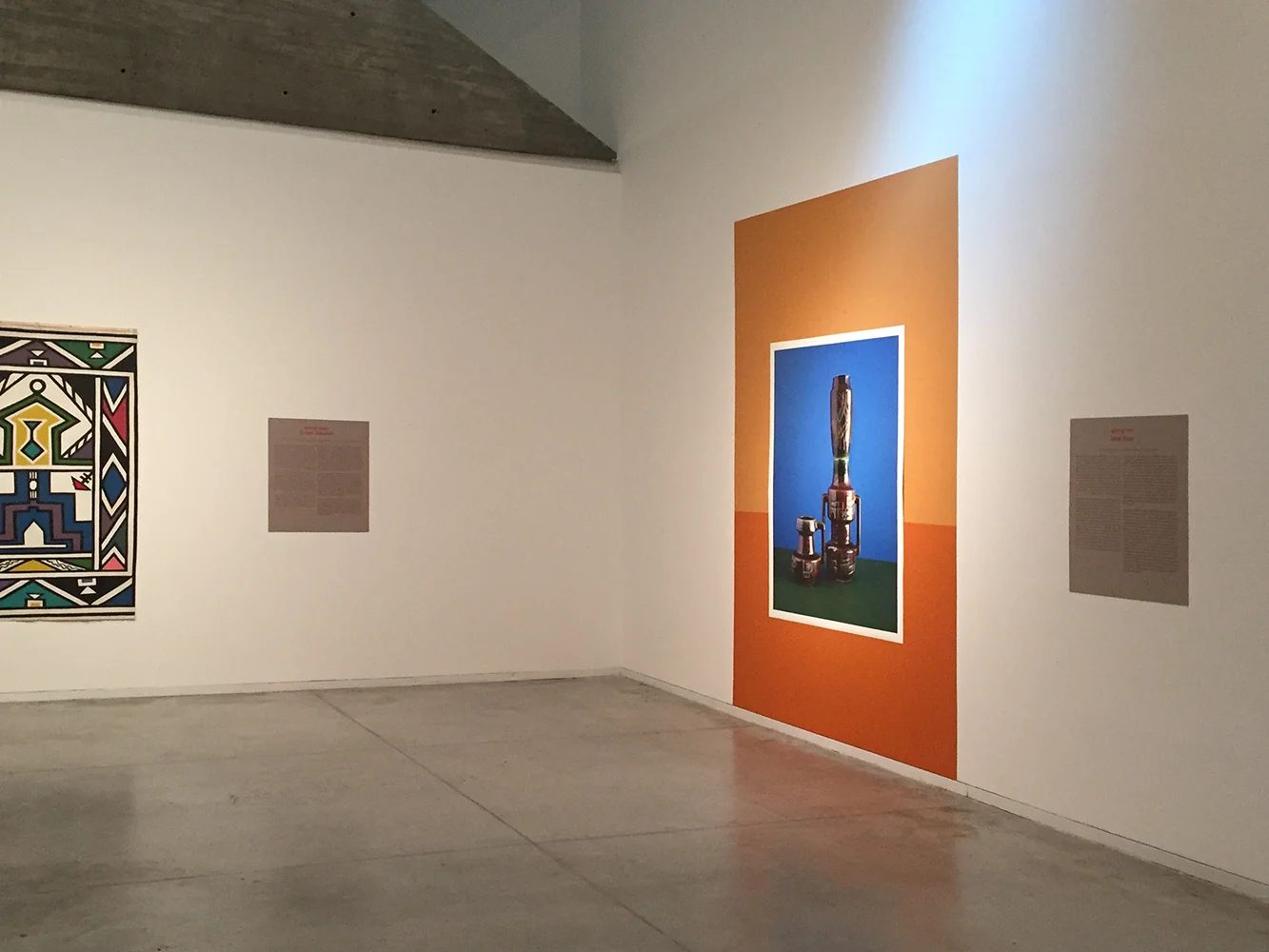
Africana Installation view, Tel Aviv Museum 2017
Mixed technique, color photography, inkjet print and paint on wall
(Print size: 130x170 cm / Work size: 230x320 cm)

Africana Installation view, Tel Aviv Museum 2017
Mixed technique, color photography, inkjet print and paint on wall
(Print size: 130x170 cm / Work size: 230x320 cm)
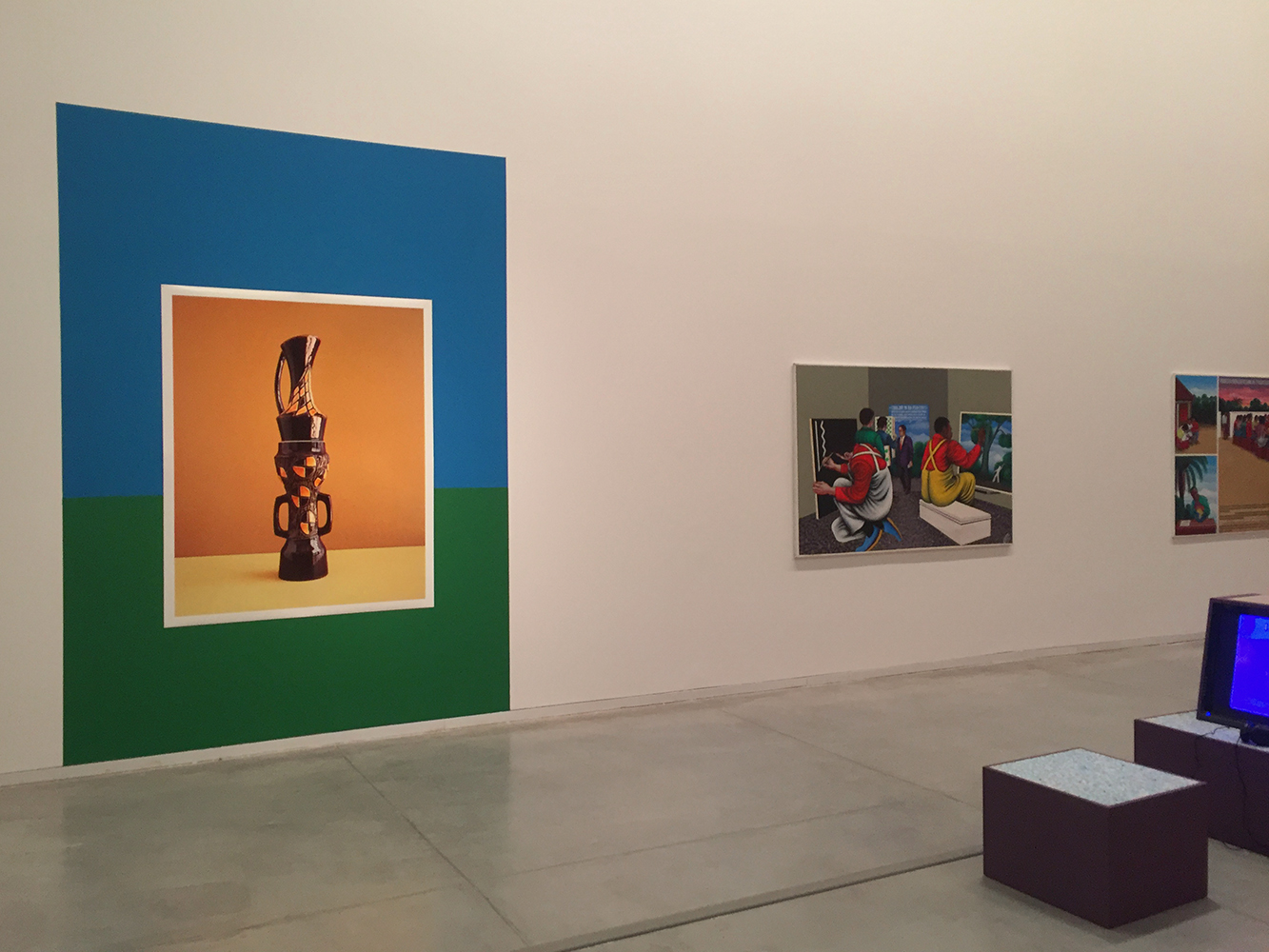
Africana Installation view, Tel Aviv Museum 2017
Mixed technique, color photography, inkjet print and paint on wall
(Print size: 130x170 cm / Work size: 230x320 cm)

Africana Installation view, Tel Aviv Museum 2017
Mixed technique, color photography, inkjet print and paint on wall
(Print size: 130x170 cm / Work size: 230x320 cm)
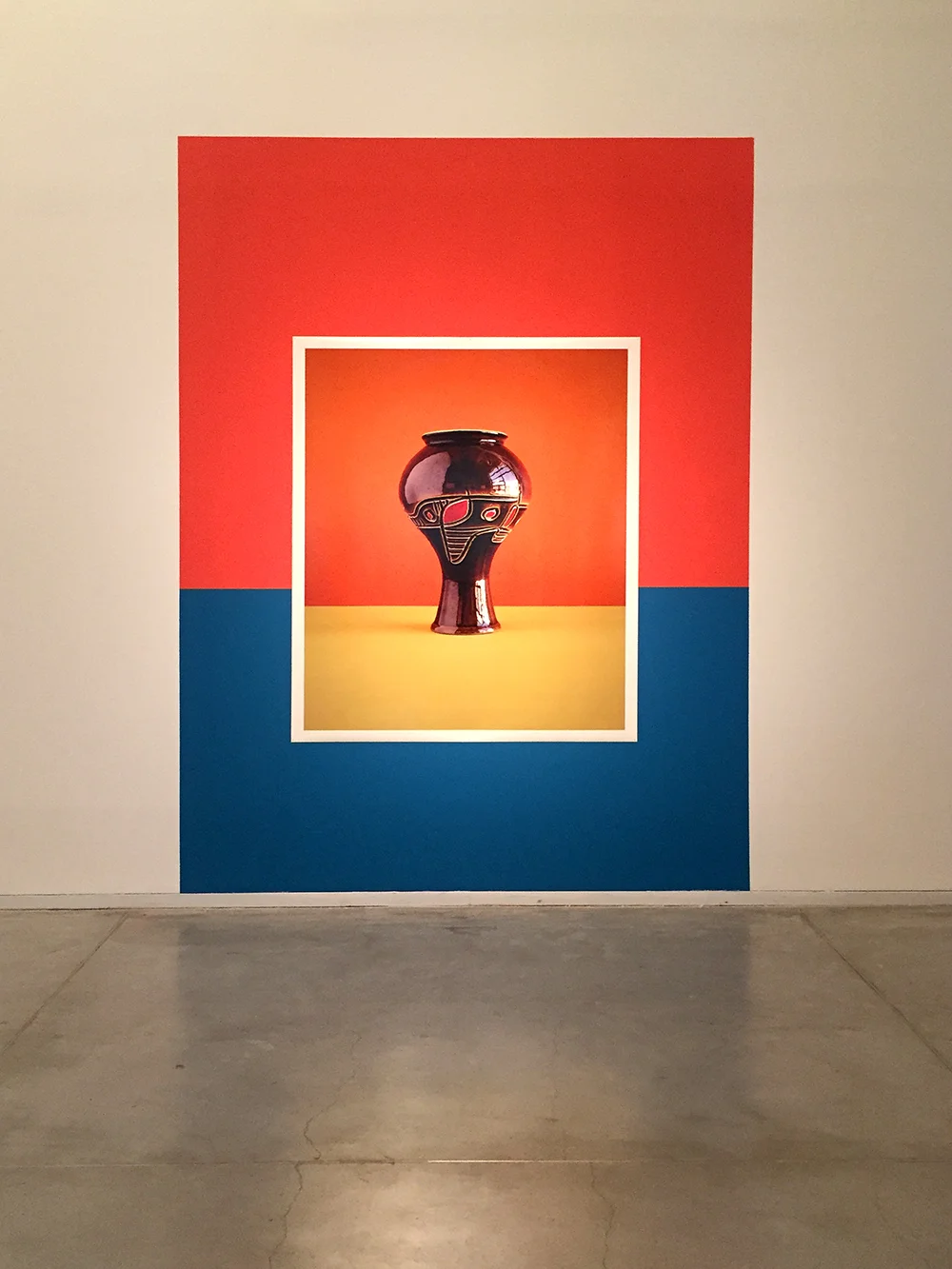
Africana Installation view, Tel Aviv Museum 2017
Mixed technique, color photography, inkjet print and paint on wall
(Print size: 130x170 cm / Work size: 230x320 cm)
Africana Installation view, Tel Aviv Museum 2017
Mixed technique, color photography, inkjet print and paint on wall
(Print size: 130x170 cm / Work size: 230x320 cm)
Regarding Africa: Contemporary Art and Afro-Futurism
Curator: Ruth Direktor
The term Afro-futurism refers to music that grew during the 1960s among Afro-Americans as well as to the poetry, comics, cinema and art that developed later. Today it applies to a wide range of art that reflects, in various absurd ways, an African version of futurism. That is, the subversion of traditional divisions: fantasy and cosmology, usually ascribed to the mythology of a pre-modern past, transmute in an ancient-modern attire to representations of science fiction and futurology. Different narratives are reflected through utterances that shatter the conventional distinctions between truth and fiction, between myth and science, between technology and spiritualism. Often, the supernatural conception anchored in primeval myths appears in a futurist context, thus subverting hegemonic thought. In contrast, animism and science fiction coexist without conflict and in fact stem from the same sources.
The works in the exhibition reflect the vitality and effervescence that motivate Africa today, as well as the chaotic, brutal and at times tragic African reality, and its never-ending changes. Thus the exhibition not only denotes the futurist African direction, but also moves along the axis between an optimist and a pessimist perception of the continent, decades after its gradual liberation from colonialism. The works were created during the post-colonial period: the earliest date to the 1960s and 1970s (Africa’s “Decade of Independence”) and should be viewed as individual cases , as well as expressions of colonialism and its ramifications, through a redefinition of the African body, landscape and culture.
Works created in Israel reflect Little Africa—the growing community of immigrant workers and asylum seekers from Africa in south Tel Aviv. They express various aspects of the Africa–Israel connection, and of the way Africa has assimilated into the Israeli imagination, fantasy and reality.
Afro-futurism is proposed here as a prism of looking at sub-Saharan Africa, which is powerfully present, with all its complexity and tributaries, in the artistic work and discourse of the past few decades. Some regard Afro-futurism as a movement, others as a philosophy, but whether it is a worldview or an aesthetics, Afro-futurism is a means for stepping over the tortured past of Africa and the African diaspora, and adopt the future through a black cultural lens.
Africana 2016
Mixed technique, color photography, inkjet print and paint on wall
(Print size: 130x170 cm / Work size: 230x320 cm)
In 2003, David Adika presented “Mahogany,” a series of 11 photographs of wooden statuettes from Africa that decorated his parents’ living room. His father had brought them from his travels to Africa—small sculptures of animals made of pale wood and painted black, sold as souvenirs. Adika photographed them on a glossy black surface, with dramatic lighting, seeking to echo the domestic sideboard, and printed the photographs in a large format, thus providing the African souvenir statuettes with a magnificent, monumental representation. The title “Mahogany” further imbued them with the opulence of the expensive wood (which has nothing to do with them) and hinted at a pun: the Hebrew word for “mahogany” can be read as “what is my color?” The question which Adika raised about the statuettes as well as about himself made the first link in Israeli art between the African black and the relative blackness of Oriental Israelis, thus diverting along the way the post-colonial discourse to the local, ethnic context.
The series “Africana” continues Adika’s ongoing interest in objects as identity conductors and in still life as the continuation or replacement of the body as a political entity. At the core of these new photographs is commercial glazed ceramic tableware made in Israel in the 1950s, 1960s and 1970s by companies including Na’aman, Lapid, Palceramic and Beit Hayotser, in the attempt to create an authentic Israeli material language. The tableware, generally known as “Israeliana,” eventually lost its attraction due to, among other reasons, its identification with archeology, ideology and the fascination with the idea of a “homeland,” as well as changing tastes. Today it can be found in flea markets—usually slightly faulty or broken—where Adika purchases the pieces, building himself a collection of Israeliana in earthen hues, with the esthetics of Modernism identified with Israel’s early decades. When he photographs them against a background of wooden panels painted in complementary colors, he extricates from these vessels the layers of African influence that have not been elucidated so far, nor noted in the consciousness: the shapes, colors, design. He photographs the tableware singly, in pairs and in groups, and only a slight change of perception is needed in order to transform it into staged studio portraits.
Adika makes a double move here: he presents the formalist aspect of the 1984 MOMA exhibition “Primitivism in 20th Century Art: Affinity of the Tribal and the Modern” and annexes to it the insights of post-colonial discourse. The photographs show how the new, modern-western Israeli identity often adopted, not necessarily consciously, an African esthetic—exotic and authentic rootedness in the guise of Modernism.
Curator: Ruth Direktor, TLV Museum 2017
Africana Installation view, Tel Aviv Museum 2017
Mixed technique, color photography, inkjet print and paint on wall
(Print size: 130x170 cm / Work size: 230x320 cm)
Africana 2016
Mixed technique, color photography, inkjet print and paint on wall
(Print size: 130x170 cm / Work size: 230x320 cm)
Africana Installation view, Tel Aviv Museum 2017
Mixed technique, color photography, inkjet print and paint on wall
(Print size: 130x170 cm / Work size: 230x320 cm)
Africana 2016
Mixed technique, color photography, inkjet print and paint on wall
(Print size: 130x170 cm / Work size: 230x320 cm)
Africana Installation view, Tel Aviv Museum 2017
Mixed technique, color photography, inkjet print and paint on wall
(Print size: 130x170 cm / Work size: 230x320 cm)
Africana Installation view, Tel Aviv Museum 2017
Mixed technique, color photography, inkjet print and paint on wall
(Print size: 130x170 cm / Work size: 230x320 cm)
Africana Installation view, Tel Aviv Museum 2017
Mixed technique, color photography, inkjet print and paint on wall
(Print size: 130x170 cm / Work size: 230x320 cm)
Africana Installation view, Tel Aviv Museum 2017
Mixed technique, color photography, inkjet print and paint on wall
(Print size: 130x170 cm / Work size: 230x320 cm)
Africana Installation view, Tel Aviv Museum 2017
Mixed technique, color photography, inkjet print and paint on wall
(Print size: 130x170 cm / Work size: 230x320 cm)
Africana Installation view, Tel Aviv Museum 2017
Mixed technique, color photography, inkjet print and paint on wall
(Print size: 130x170 cm / Work size: 230x320 cm)
Africana Installation view, Tel Aviv Museum 2017
Mixed technique, color photography, inkjet print and paint on wall
(Print size: 130x170 cm / Work size: 230x320 cm)













